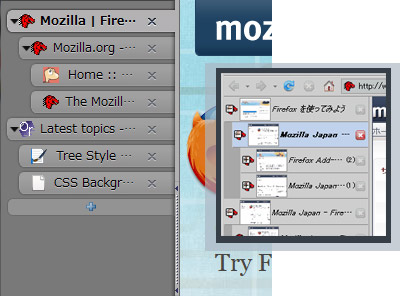I stumbled upon these two extensions for Firefox a couple of days ago and it is one of the more interesting add-on to change the way you think of browsing. It turns tabs to a tree format and allows you to have breadcrumbs in your URL.
Tree Style Tab
Tree-style UI has been prominently used in Windows Vista and the upcoming Windows 7 that allows you to have an overview of your directory structure and navigate from one place to another easily. Its hierarchical structure makes it easier to see how your folders are structured at a glance.

The Tree Style Tab extension will place all your tabs on the left (ala Windows Explorer in Vista) and from here on, every time you open a new tab from an existing page, the tab created will be placed under the parent website, and so on. This allows you to see quickly where you came from, and also collects tabs from the same website into one group. This way, you can go on opening tabs and switching around different sites without getting confused in a sea of tabs later on.
Breadcrumbs
Another extension you might want to try out is Breadcrumbs. Breadcrumb navigation is also introduced in Windows Vista (although Linux has it for a long time now) that allows you to go back to a parent directory and also gives you a visual indication of what route you took to arrive at the current folder. For me, this wasn’t really an issue as I always use “Backspace” to go back to the parent folder one step at a time, but for browsers, you can now have Breadcrumb style navigation using this extension.
To use it, let us assume the following URL:
http://pretend.com/this/is/something.htm
If we double click on “is”, we will automatically go to
http://pretend.com/this/is
And so on.
However, many websites won’t work with breadcrumbs either because they did not configure a default page for a particular subdirectory, or simply because they have disabled the ability to view subdirectories from their server. Regardless of this limitation, quite a lot of sites will function well with it.
To use it, let us assume a URL:
